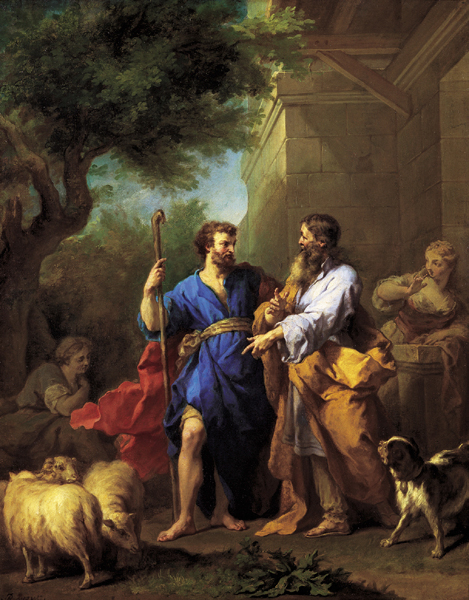Image Details

Giraudon/Art Resource, NY
“Jacob greets Laban,” by French artist Jean Restout (1692–1768). Having fled his home and the wrath of his brother Esau, the youthful Jacob is welcomed into his uncle Laban’s home, where he agrees to work as a shepherd for seven years in exchange for the hand of his younger cousin, Rebecca (at right). Years later, however, Jacob remains in his uncle’s debt, having been tricked into first marrying his elder cousin, Leah (at left), and then working an additional seven years for Rebecca. When at last Jacob has fulfilled his obligations, and has acquired a flock of his own, he tells his wives that he has had a dream in which an angel told him “to arise, go forth from this land and return to the land of [his] fathers” (Genesis 31:4–13).
The question of whether Jacob fabricated this dream to justify his imminent departure is put to rest by the Samaritan Pentateuch, where we are twice told the story of the dream—once when Jacob actually dreams it and again when he recounts it to his wives. This type of clarification, found throughout the Samaritan Pentateuch, in no way diminished the authority of the text, which became canonical for the Samaritan community.
